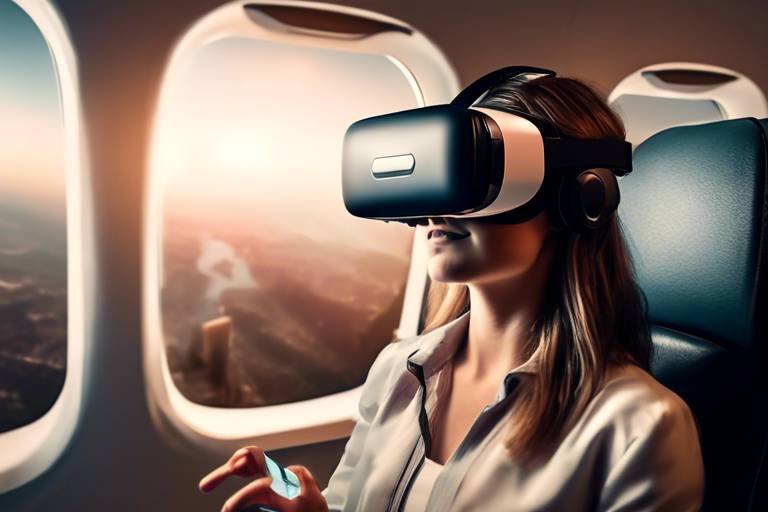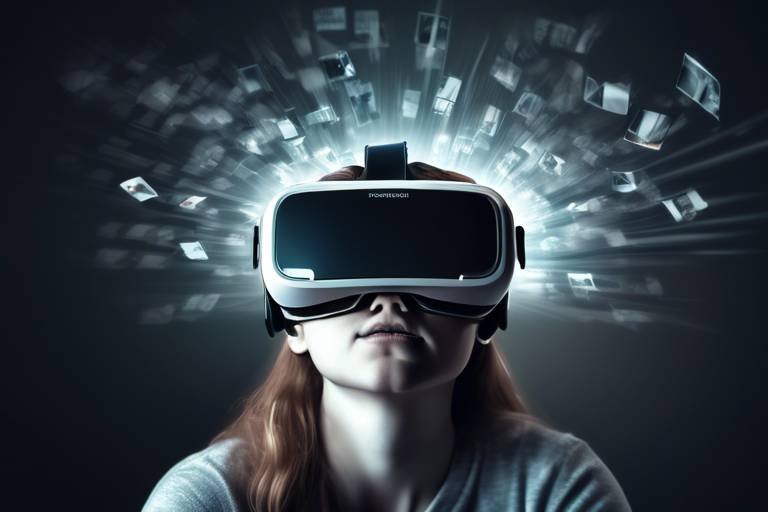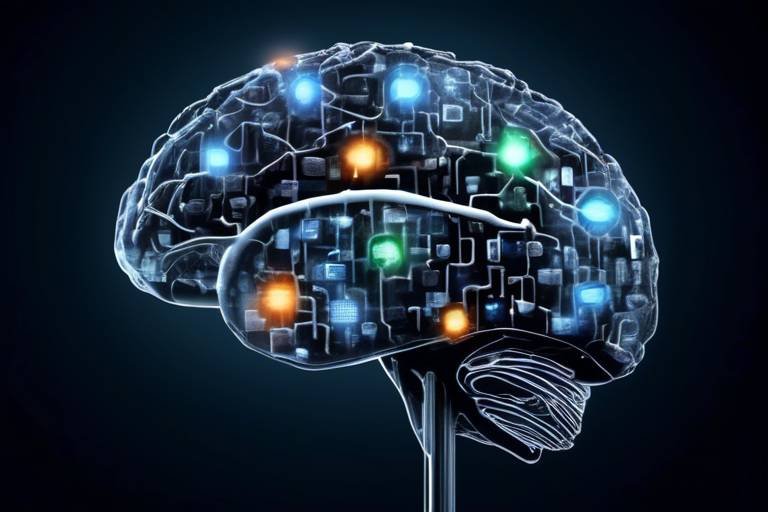Future Trends in Voice Recognition Technologies
The world of voice recognition technologies is rapidly evolving, and it’s an exciting time to explore how these advancements are reshaping our daily lives. From the way we interact with our devices to how businesses streamline operations, voice recognition is becoming an integral part of our technological landscape. Imagine walking into your home and simply saying, “Turn on the lights,” or asking your virtual assistant to schedule your appointments while you’re cooking dinner. These scenarios are no longer just dreams; they are becoming our reality.
As we delve deeper into the future of voice recognition, we can’t ignore the significant advancements in Natural Language Processing (NLP) that are enhancing the accuracy and efficiency of these systems. Recent breakthroughs in NLP algorithms have enabled machines to better understand context, nuances, and even the emotional undertones of spoken language. This means that voice recognition systems are not just responding to commands; they are beginning to engage in more natural and meaningful conversations with users.
Furthermore, the integration of Artificial Intelligence (AI) into voice recognition technologies is a game changer. AI is driving the development of more responsive and intelligent voice systems that can learn from user interactions and adapt over time. This capability is particularly evident in voice-activated assistants, which are becoming increasingly sophisticated. They are not only recognizing commands but also predicting user needs based on previous interactions. The future of these personal assistants looks promising, with expectations that they will become even more embedded in our everyday activities.
In addition to personal use, the transformative power of voice recognition extends to smart homes as well. Imagine controlling your home environment with just your voice—adjusting the thermostat, locking the doors, or even playing your favorite music without lifting a finger. This level of convenience and security is what smart home technology aims to provide. However, with great power comes great responsibility, and the rise of voice recognition also raises important questions about privacy. As more devices collect voice data, the implications for user consent and data protection become critical. It’s essential to ensure that users are aware of how their data is being used and that robust measures are in place to protect their privacy.
The healthcare sector is also witnessing a revolution thanks to voice recognition technologies. From improving patient care to streamlining documentation, the applications are vast and impactful. Voice recognition can help healthcare providers communicate more effectively with patients, reducing the time spent on administrative tasks and allowing more focus on patient interaction. This is not just a trend; it’s a movement towards a more efficient and patient-centered healthcare system.
As we look towards the future, it’s clear that the voice recognition market is poised for explosive growth. Emerging players are entering the field, bringing innovative solutions and challenging established giants. Consumer demand is shifting, with users seeking more intuitive and responsive voice technologies. Understanding these market trends is vital for businesses looking to leverage voice recognition to enhance customer service and operational efficiency.
- What is voice recognition technology?
Voice recognition technology is a system that can identify and process human speech, converting it into a machine-readable format.
- How does Natural Language Processing improve voice recognition?
NLP enhances voice recognition by allowing systems to understand context, intent, and nuances in spoken language, leading to more accurate responses.
- What are the privacy concerns associated with voice recognition?
Privacy concerns include the potential misuse of voice data, lack of user consent, and the need for stringent data protection measures.
- How is voice recognition used in healthcare?
In healthcare, voice recognition is used for patient documentation, improving communication between providers and patients, and streamlining administrative tasks.
- What does the future hold for voice recognition technology?
The future of voice recognition technology looks promising, with advancements in AI and NLP expected to enhance capabilities, leading to wider adoption across various sectors.

Advancements in Natural Language Processing
Natural Language Processing, or NLP, is the backbone of voice recognition technology, and recent advancements have propelled it to new heights. Imagine talking to your devices as if you were having a conversation with a friend; that’s the kind of experience NLP aims to deliver. This technology has evolved significantly, allowing systems to not only recognize words but also to understand context, emotion, and intent behind the spoken language. The breakthroughs in NLP algorithms are akin to teaching machines the nuances of human communication, making interactions smoother and more intuitive.
One of the most exciting developments in NLP is the use of transformer models, which have revolutionized how machines process language. These models analyze entire sentences rather than individual words, allowing for a deeper understanding of context. For instance, if you say, “I can’t wait to go to the bank,” a traditional system might struggle to determine whether you’re referring to a financial institution or the side of a river. However, with advanced NLP, the system can grasp the context based on prior interactions or additional cues.
Moreover, the incorporation of contextual embeddings has significantly improved the accuracy of voice recognition systems. These embeddings allow models to understand the relationships between words in a sentence, enhancing their ability to interpret phrases accurately. For example, in a medical setting, a voice recognition system can differentiate between “heart attack” and “heart rate” based on the surrounding words, which is crucial for effective communication in healthcare.
To illustrate the advancements in NLP, consider the following table showcasing some key improvements:
| Advancement | Description | Impact |
|---|---|---|
| Transformer Models | Utilizes attention mechanisms to analyze entire sentences. | Improved context understanding and accuracy. |
| Contextual Embeddings | Captures word relationships within sentences. | Enhanced interpretation of phrases and commands. |
| Sentiment Analysis | Analyzes emotional tone in spoken language. | Allows systems to respond empathetically. |
Additionally, the integration of sentiment analysis in NLP is a game-changer. By understanding the emotional tone behind a user’s words, voice recognition systems can respond in a way that feels more human. For example, if a user expresses frustration, the system can adjust its tone or provide more supportive responses. This capability is particularly beneficial in customer service, where empathy can significantly enhance user experience.
As we look to the future, the advancements in NLP promise to make voice recognition even more seamless and integrated into our daily lives. The goal is to create systems that not only understand what we say but also how we feel and what we mean. This evolution is paving the way for more personalized interactions, making technology feel less like a tool and more like a companion.
In conclusion, the advancements in Natural Language Processing are transforming voice recognition technologies, making them more capable of understanding human language in all its complexity. As these technologies continue to evolve, we can expect a future where our interactions with devices are as natural as chatting with a friend.

Integration with Artificial Intelligence
The integration of Artificial Intelligence (AI) with voice recognition technologies is not just a trend; it's a revolution that is transforming how we interact with machines. Imagine talking to your devices as if they were your friends—this is becoming a reality thanks to AI. By employing sophisticated algorithms, AI enhances the capabilities of voice recognition systems, making them not only more responsive but also incredibly intelligent. These systems learn from user interactions, adapting to individual speech patterns and preferences, which leads to a more personalized experience.
One of the most exciting aspects of this integration is the use of machine learning and deep learning. These technologies allow voice recognition systems to improve over time. For instance, when you ask your voice assistant a question, it doesn't just process the words; it understands the context, the intent behind your query, and even the emotional tone of your voice. This level of understanding is achieved through vast datasets that AI algorithms analyze to identify patterns and nuances in human speech.
Moreover, voice-activated assistants, powered by AI, are becoming ubiquitous in our daily lives. From controlling smart home devices to managing our schedules, these assistants are designed to simplify our routines. The more we use them, the smarter they become. For example, if you frequently ask your assistant about the weather, it will start providing you with updates before you even ask. This proactive approach is a game-changer, making technology feel less like a tool and more like a companion.
As we delve deeper into the future, the potential applications of AI in voice recognition are staggering. Consider the possibilities in sectors like healthcare, where voice recognition can streamline patient documentation. Imagine a doctor dictating notes directly into a system that not only transcribes but also understands medical terminology and context, significantly reducing administrative burdens. This integration not only enhances efficiency but also allows healthcare professionals to focus more on patient care.
However, with great power comes great responsibility. The integration of AI into voice recognition raises important questions about privacy and data security. As these systems collect vast amounts of voice data, ensuring that this information is protected and used ethically is paramount. Users must be informed about how their data is being used and have control over it. This is where user consent becomes critical, as it builds trust between the technology and its users.
In summary, the integration of AI with voice recognition technologies is paving the way for a future where our interactions with machines are more intuitive and efficient. As these systems continue to evolve, we can expect to see even more innovative applications that enhance our daily lives, revolutionizing industries and setting new standards for user experience.
- What is the role of AI in voice recognition? AI enhances voice recognition by improving its accuracy and responsiveness through machine learning and deep learning algorithms.
- How do voice-activated assistants learn from users? They analyze user interactions to adapt to individual speech patterns and preferences, making the experience more personalized.
- What are the privacy concerns with voice recognition technologies? As these systems collect voice data, it is crucial to ensure that user data is protected and that users give informed consent for its use.

Voice-Activated Assistants
Voice-activated assistants have truly become a part of our everyday lives, evolving from mere novelties into essential tools that many of us can’t imagine living without. Whether it's asking for the weather, setting reminders, or even controlling smart home devices, these assistants are designed to make our lives easier and more efficient. But have you ever wondered how they work behind the scenes? The magic lies in complex algorithms and a deep understanding of Natural Language Processing (NLP) that allows these systems to comprehend and respond to our requests in a human-like manner.
The adoption of voice-activated assistants has skyrocketed in recent years. According to recent studies, more than 50% of households in the U.S. now own a smart speaker. This trend is expected to continue as more people discover the convenience these devices bring. Imagine walking into your home after a long day, and with just a simple command, your lights dim, your favorite playlist starts playing, and the thermostat adjusts to your preferred temperature. Sounds like something out of a sci-fi movie, right? But this is reality, thanks to advancements in voice recognition technology.
As we delve deeper into the realm of voice-activated assistants, it's essential to highlight some of the most popular players in the market. The table below outlines the leading voice assistants and their unique features:
| Voice Assistant | Key Features | Compatible Devices |
|---|---|---|
| Amazon Alexa | Smart home control, music streaming, shopping | Echo devices, Fire TV, smart TVs |
| Google Assistant | Search capabilities, smart home integration, calendar management | Google Nest, Android devices, smart displays |
| Siri | iOS integration, messaging, reminders | iPhone, iPad, HomePod |
| Cortana | Productivity tools, Microsoft Office integration | Windows devices, smart speakers |
It's fascinating to see how these assistants are not only improving but also becoming more personalized. We all have our preferences, and voice-activated assistants are learning to adapt to our unique voices and commands. This personalization is a game-changer, as it enhances user experience and builds a more intuitive interaction. However, the journey doesn’t stop here. The future promises even more exciting developments.
Looking ahead, we can expect voice-activated assistants to become increasingly integrated into various aspects of our lives. From healthcare to automotive applications, the potential uses are limitless. Imagine a scenario where your voice assistant can monitor your health metrics and remind you to take your medications or even alert your doctor if there’s a concerning trend. Or picture a world where your car can understand your mood and play your favorite tunes to lift your spirits during a long drive. These possibilities are not just dreams; they are on the horizon.
However, with all this convenience comes the need for caution. As we embrace these technologies, we must also be aware of the privacy concerns that accompany them. The data collected by voice assistants can be sensitive, and understanding how this data is used is crucial. Users should always be informed about the privacy policies of the devices they use and the importance of consent in data collection.
In conclusion, voice-activated assistants are transforming the way we interact with technology. Their ability to understand and respond to our commands is just the beginning. As advancements continue, we can look forward to a future where these assistants become even more integrated into our daily routines, making life simpler and more enjoyable.
Q: What are voice-activated assistants?
A: Voice-activated assistants are software programs that use voice recognition technology to understand and respond to user commands, allowing for hands-free operation of devices and services.
Q: How do voice-activated assistants improve user experience?
A: They provide convenience, enable multitasking, and offer personalized interactions, making it easier for users to access information and control their environment.
Q: Are there privacy concerns with using voice-activated assistants?
A: Yes, users should be aware that these devices collect data on voice commands and interactions, so it’s essential to understand the privacy policies and data protection measures in place.

Smart Home Integration
In today’s fast-paced world, the concept of a smart home is no longer just a futuristic dream; it’s a reality that many of us are embracing. Imagine walking into your home, and with a simple voice command, the lights dim, the thermostat adjusts to your preferred temperature, and your favorite music starts playing. This seamless integration of voice recognition technologies into our daily lives is revolutionizing how we interact with our living spaces.
Voice recognition systems are at the heart of smart home integration, allowing users to control various devices effortlessly. From smart speakers to intelligent security systems, the possibilities are endless. For instance, many households are now equipped with devices that can recognize commands such as:
- "Turn on the living room lights."
- "Set the thermostat to 72 degrees."
- "Lock the front door."
This level of convenience not only enhances our lifestyle but also provides a sense of security. Imagine being able to check your home’s security cameras or adjust your home’s lighting from anywhere, all through voice commands. The integration of voice recognition into smart home devices is making this possible, creating a more connected and responsive living environment.
However, the journey to a fully integrated smart home is not without its challenges. Compatibility between different devices and platforms can often be a hurdle. Many consumers find themselves frustrated when trying to connect devices from different manufacturers. Fortunately, industry leaders are increasingly focusing on creating universal standards that allow various devices to communicate with one another seamlessly.
Moreover, as voice recognition technologies continue to evolve, we can expect even greater advancements in smart home integration. Future systems may incorporate contextual awareness, enabling devices to understand not just the command but also the context in which it is given. For example, if you say, “It’s too cold in here,” a smart home system could interpret that as a request to adjust the heating without needing a specific command.
As we look ahead, the potential for smart home integration with voice recognition technologies seems limitless. With the rise of the Internet of Things (IoT), our homes are becoming more intelligent, and voice recognition is the key that unlocks this new level of convenience and control. It's an exciting time to be a part of this technological revolution, and as these systems become more sophisticated, they will undoubtedly enhance our day-to-day lives in ways we can only begin to imagine.

Privacy Concerns
As voice recognition technologies become increasingly integrated into our daily lives, the surrounding these systems are taking center stage. Imagine having a conversation in your living room, only to realize that your voice-activated assistant is always listening, recording snippets of your discussions. This raises critical questions about how our voice data is collected, stored, and utilized. Are we truly aware of the implications of having our voices constantly monitored by devices designed to make our lives easier?
One of the main issues is the collection of voice data. Companies often gather vast amounts of audio recordings to improve their services. However, this practice can lead to significant privacy violations if users are not adequately informed. For instance, many consumers are unaware that their voice commands might be stored indefinitely, leaving them vulnerable to data breaches or unauthorized access. In fact, a study revealed that over 60% of users do not read privacy policies before agreeing to them, highlighting a concerning trend of ignorance about data handling practices.
Furthermore, the lack of transparency in how this data is used can lead to mistrust. Users may wonder: What happens to my voice recordings? Are they shared with third parties? Are they used for targeted advertising? These questions underscore the need for stringent regulations and clearer communication from companies regarding their data practices.
To address these privacy concerns, many experts advocate for stronger user consent mechanisms. This means that companies should not only seek permission to collect voice data but also provide users with the option to delete their recordings at any time. Additionally, implementing robust encryption methods can help protect sensitive information from unauthorized access. As technology evolves, so too must our approaches to privacy, ensuring that users feel safe and secure when interacting with voice recognition systems.
Ultimately, the challenge lies in balancing innovation with privacy. As we embrace the convenience of voice recognition technologies, we must also demand accountability from the companies that develop them. By fostering a culture of transparency and user empowerment, we can enjoy the benefits of these advancements without compromising our personal privacy.
- What data is collected by voice recognition devices? Voice recognition devices typically collect audio recordings of your commands, which may include personal information or contextual data.
- Can I delete my voice recordings? Many devices allow you to delete your voice history through their settings, but it is essential to check the specific privacy policies of each device.
- Are my conversations being recorded without my knowledge? While devices are designed to listen for activation words, concerns exist about unintentional recordings. It’s crucial to review the privacy settings of your devices.
- What can I do to protect my privacy? You can protect your privacy by adjusting the settings on your devices, being mindful of what you say around them, and regularly reviewing privacy policies.

Healthcare Applications
Voice recognition technology is not just a futuristic concept; it's actively transforming the healthcare landscape today. Imagine a world where doctors can dictate notes while examining a patient, or where patients can interact with their medical records just by speaking. This is not science fiction; it's happening right now, and the benefits are profound. Voice recognition systems are streamlining processes, reducing administrative burdens, and enhancing patient care.
One of the most significant applications of voice recognition in healthcare is in clinical documentation. Traditionally, healthcare professionals spend a significant amount of time on paperwork and entering data into electronic health records (EHRs). With voice recognition, clinicians can simply speak their observations and notes, allowing for more time to focus on patient care rather than administrative tasks. This not only improves efficiency but also enhances the accuracy of the records, as spoken language can be transcribed in real-time with remarkable precision.
Moreover, voice recognition technology is playing a crucial role in improving communication between healthcare providers and patients. For example, patients with disabilities or those who have difficulty typing can use voice commands to access their medical information, schedule appointments, or even request medication refills. This empowers patients, making healthcare more accessible and inclusive. As the technology evolves, we can expect even more sophisticated applications that will further enhance patient engagement.
In addition, voice recognition systems are being integrated into telemedicine platforms. With the rise of remote healthcare services, having a reliable voice recognition tool can facilitate smoother consultations. Imagine a patient discussing symptoms with a doctor over a video call, where the system transcribes the conversation for future reference, ensuring that no vital information is lost. This not only improves the quality of care but also enhances the overall patient experience.
However, the integration of voice recognition technology in healthcare is not without challenges. Issues such as accuracy in diverse accents and the need for robust security measures to protect sensitive patient information must be addressed. To tackle these challenges, developers are continuously refining algorithms and employing advanced machine learning techniques. As these systems learn and adapt, their effectiveness will only improve, offering even greater benefits to the healthcare sector.
In summary, the applications of voice recognition in healthcare are vast and varied. From improving clinical documentation to enhancing patient-provider communication, this technology is paving the way for a more efficient and patient-centered healthcare system. As we look to the future, the potential for voice recognition to revolutionize healthcare is immense, promising a more streamlined, accessible, and effective approach to patient care.
- How does voice recognition improve clinical documentation?
Voice recognition allows healthcare professionals to dictate notes in real-time, reducing time spent on paperwork and increasing accuracy. - Can voice recognition technology enhance patient engagement?
Yes, it enables patients to access their medical records and communicate with healthcare providers more easily, especially for those with disabilities. - What challenges does voice recognition face in healthcare?
Challenges include ensuring accuracy across different accents and maintaining the security of sensitive patient data. - Is voice recognition technology widely adopted in telemedicine?
Yes, it is increasingly being integrated into telemedicine platforms to facilitate smoother consultations and better documentation.

Challenges in Voice Recognition Technology
Despite the incredible advancements in voice recognition technology, several challenges persist that can hinder its effectiveness and widespread adoption. One of the most significant obstacles is the issue of accent recognition. With a global population that speaks a multitude of languages and dialects, ensuring that voice recognition systems can accurately understand diverse accents is crucial. Imagine a system designed to assist users in a multicultural city—if it struggles to comprehend various accents, it risks alienating a significant portion of its user base. Developers are working hard to create algorithms that can adapt to different speech patterns, but the task remains daunting.
Another major hurdle is background noise interference. In real-world scenarios, users often interact with voice recognition systems in noisy environments, such as bustling streets or crowded offices. This ambient noise can significantly reduce the accuracy of voice commands, leading to frustration for users. To combat this, engineers are developing innovative techniques to filter out background noise. For instance, some systems employ advanced machine learning algorithms that can differentiate between the user's voice and other sounds, thereby enhancing command processing. However, achieving the perfect balance between recognizing the user's voice and ignoring distracting noises is still a work in progress.
Moreover, the need for continuous learning poses a challenge. Voice recognition systems must evolve and adapt to the changing patterns of human speech over time. This means that the technology needs to be regularly updated with new data to improve its understanding of language nuances. Without this ongoing learning process, these systems may become outdated and less effective, ultimately leading to user dissatisfaction.
In addition to these technical challenges, there are also ethical considerations that need to be addressed. As voice recognition technology becomes more integrated into our daily lives, it raises important questions about privacy and data protection. Users often express concerns about how their voice data is collected, stored, and utilized. Ensuring that there are robust measures in place to protect user data while still providing effective voice recognition services is a delicate balance that companies must navigate.
To summarize, the challenges in voice recognition technology can be categorized into several key areas:
- Accent and Dialect Recognition: Difficulty in understanding diverse speech patterns.
- Background Noise Handling: Issues with accuracy in noisy environments.
- Continuous Learning: The need for systems to evolve with language changes.
- Ethical and Privacy Concerns: Safeguarding user data and maintaining trust.
Addressing these challenges is essential for the future of voice recognition technology. As developers and researchers continue to innovate, the hope is that these systems will become more accurate, reliable, and user-friendly, paving the way for broader applications across various sectors.
- What are the main challenges in voice recognition technology?
The main challenges include accent recognition, background noise interference, continuous learning, and privacy concerns. - How does background noise affect voice recognition?
Background noise can interfere with the system's ability to accurately process voice commands, leading to misunderstandings and errors. - Why is continuous learning important for voice recognition systems?
Continuous learning helps systems adapt to changing language patterns and user preferences, ensuring they remain effective over time. - What measures are in place to protect user data in voice recognition?
Companies are implementing various data protection protocols, but users should always be aware of how their data is used and stored.

Accent and Dialect Recognition
In our increasingly globalized world, has become a critical component of voice recognition technologies. Imagine trying to communicate with a voice-activated assistant that struggles to understand your accent; it can be incredibly frustrating! This challenge is not just a minor inconvenience but a significant barrier that can hinder the effectiveness of voice recognition systems. The diversity of human speech is vast, with thousands of accents and dialects varying not only by region but also by socio-economic backgrounds, age groups, and even personal speech patterns.
Recent advancements in Natural Language Processing (NLP) have made strides towards improving accent recognition, but there is still a long way to go. The technology needs to be trained on a wide variety of speech samples to recognize different accents accurately. For instance, a system that is trained primarily on American English may struggle with British, Australian, or Indian accents. This limitation can lead to misunderstandings, where the system either misinterprets commands or fails to respond altogether, causing user frustration.
To tackle this issue, developers are employing several innovative strategies:
- Diverse Training Data: By incorporating a broader range of voice samples from various accents and dialects into training datasets, voice recognition systems can learn to better understand and process different speech patterns.
- Machine Learning Algorithms: Advanced machine learning techniques, such as deep learning, allow systems to adapt and improve their understanding of accents over time, making them more robust and versatile.
- User Feedback Mechanisms: Implementing feedback systems where users can correct misinterpretations can significantly enhance the learning process of these technologies.
Moreover, accent recognition is not merely about understanding different speech patterns; it also plays a crucial role in making technology more inclusive. By effectively recognizing accents, voice recognition systems can cater to a broader audience, ensuring that users from various backgrounds can interact with technology seamlessly. This inclusivity is vital as it allows everyone, regardless of their native accent or dialect, to access and benefit from voice-activated technologies.
In conclusion, while the journey towards effective accent and dialect recognition is ongoing, the potential rewards are immense. As technology continues to evolve, we can expect more sophisticated systems that not only understand various accents but also appreciate the nuances of human speech. This evolution will not only enhance user experience but also democratize access to technology, making it a tool that everyone can use effortlessly.
Q1: Why is accent recognition important in voice technology?
A1: Accent recognition is crucial for ensuring that voice recognition technologies can understand and respond to users from diverse linguistic backgrounds, thereby enhancing usability and inclusivity.
Q2: How can voice recognition systems improve their understanding of different accents?
A2: By training on diverse datasets that include various accents, utilizing advanced machine learning techniques, and incorporating user feedback, voice recognition systems can continually improve their accuracy in understanding different speech patterns.
Q3: Are there any limitations to current voice recognition technologies regarding accents?
A3: Yes, many systems still struggle with accurately recognizing certain accents, especially if they are not part of the primary training dataset. This can lead to misinterpretations and user frustration.
Q4: What role does user feedback play in accent recognition?
A4: User feedback is vital as it helps voice recognition systems learn from their mistakes. When users correct misinterpretations, it allows the system to adapt and improve its understanding of various accents over time.

Background Noise Handling
In the world of voice recognition technology, background noise can be a significant hurdle. Imagine trying to have a conversation in a bustling café or amidst the clamor of a busy street. Just like our ears filter out the chatter to focus on the person speaking directly to us, voice recognition systems must employ similar strategies to discern commands accurately. The challenge lies in the fact that these systems often struggle to differentiate between the target voice and surrounding sounds, which can lead to misinterpretation or failure to recognize commands altogether.
Recent advancements in signal processing techniques have shown promise in improving the accuracy of voice recognition systems in noisy environments. One such technique is known as noise suppression, which actively filters out unwanted sounds while amplifying the target voice. This is akin to a spotlight illuminating a performer on stage while dimming the audience's noise. By leveraging machine learning algorithms, these systems can learn to identify and isolate voices from various types of background noise, making them more effective in real-world scenarios.
Furthermore, researchers are exploring the use of multi-microphone arrays to enhance voice recognition capabilities. These arrays work by capturing sound from multiple directions and using advanced algorithms to analyze the audio input. By triangulating the source of the voice, the system can effectively minimize the impact of surrounding noise. This technology is particularly beneficial for applications in environments such as smart homes, automotive systems, and even public spaces where noise levels can fluctuate dramatically.
To illustrate the effectiveness of these advancements, consider the following table that showcases different noise handling techniques and their potential applications:
| Technique | Description | Applications |
|---|---|---|
| Noise Suppression | Filters out unwanted background sounds to enhance target voice clarity. | Smart speakers, mobile devices |
| Multi-Microphone Arrays | Utilizes multiple microphones to capture and analyze sound from various directions. | Automobiles, public address systems |
| Adaptive Filtering | Adjusts processing based on the noise environment to optimize voice recognition. | Healthcare, customer service applications |
As we move forward, the importance of effective background noise handling cannot be overstated. It’s not just about making technology work; it’s about making it work seamlessly in our everyday lives. The goal is to ensure that users can interact with their devices without frustration, regardless of the surrounding environment. As these technologies continue to evolve, we can expect to see even greater improvements in voice recognition accuracy, making our interactions with machines more intuitive and human-like.
- What is background noise handling in voice recognition?
Background noise handling refers to the techniques used to filter out unwanted sounds in order to accurately recognize and process the target voice. - How do noise suppression techniques work?
Noise suppression techniques analyze audio input to differentiate between the target voice and background noise, effectively filtering out the latter. - What role do multi-microphone arrays play?
Multi-microphone arrays capture sound from various directions to improve the accuracy of voice recognition in noisy environments.

Future Market Trends
The voice recognition market is on an exhilarating trajectory, evolving at a pace that feels almost surreal. With technological advancements and increasing adoption across various sectors, the future of voice recognition holds immense promise. One of the most striking trends is the growing integration of voice recognition technologies in everyday applications. Imagine walking into your home, and with just your voice, you can control everything from the lights to the thermostat. This is not just futuristic thinking; it’s happening right now!
Market forecasts indicate that the voice recognition industry is projected to grow significantly in the coming years. According to recent studies, the global voice recognition market is expected to reach $27.16 billion by 2026, expanding at a compound annual growth rate (CAGR) of 17.2% from 2021 to 2026. This growth is driven by several factors, including the increasing demand for voice-activated devices and the rising trend of smart homes and IoT (Internet of Things) technology.
Moreover, emerging players are entering the market, bringing innovative solutions that challenge established names. The competition is fierce, and this is beneficial for consumers as it leads to better products and services. Companies are not only focusing on enhancing the accuracy of voice recognition but also on making systems more intuitive and user-friendly. This shift is crucial because, let’s face it, no one wants to repeat themselves multiple times just to get their devices to understand them!
Another significant trend is the rising consumer adoption rates of voice recognition technologies. More and more people are becoming comfortable using voice commands for various tasks. Whether it’s making a phone call, sending a text, or even ordering groceries, voice recognition is becoming the go-to method for convenience. According to a recent survey, over 60% of smartphone users have integrated voice commands into their daily routines. This trend is likely to continue as technology becomes more accessible and user-friendly.
Businesses are also recognizing the potential of voice recognition technologies. Enterprises are increasingly adopting these systems to streamline operations and enhance customer service. For instance, customer support centers are leveraging voice recognition to improve response times and accuracy in handling inquiries. By implementing voice-activated systems, businesses can not only boost efficiency but also provide a more satisfying experience for their customers. The ability to quickly process voice commands can make a significant difference in service delivery.
In summary, the future of voice recognition technologies is bright and full of possibilities. As we continue to embrace these advancements, it’s essential to keep an eye on market trends and consumer behavior. The landscape is ever-changing, and staying informed will ensure that we can fully leverage the benefits of voice recognition in our lives.
- What are the main applications of voice recognition technology? Voice recognition technology is widely used in various sectors, including healthcare, automotive, smart homes, and customer service.
- How is voice recognition technology improving? Advancements in Natural Language Processing (NLP) and integration with artificial intelligence (AI) are significantly enhancing the accuracy and responsiveness of voice recognition systems.
- What challenges does voice recognition technology face? Key challenges include accent recognition, background noise interference, and the need for continuous learning to adapt to diverse user needs.
- What is the future outlook for the voice recognition market? The voice recognition market is expected to grow rapidly, with significant advancements in technology and increasing consumer adoption.

Consumer Adoption Rates
When it comes to voice recognition technologies, understanding consumer adoption rates is like peering into a crystal ball that reveals the future of how we interact with our devices. Over the past few years, we’ve witnessed a significant surge in the popularity of voice-activated systems, and it’s not just a passing trend. In fact, a recent study showed that approximately 60% of households in the United States now own at least one voice-activated device. This shift is driven by the increasing convenience and accessibility that these technologies offer. But what exactly is fueling this adoption?
One of the primary factors is the growing awareness of the capabilities of voice recognition systems. Consumers are realizing that these technologies can do more than just play music or set reminders. They can control smart home devices, provide real-time information, and even assist with online shopping. With tech giants like Amazon, Google, and Apple continuously improving their voice assistants, users are more willing to integrate these systems into their daily lives.
Moreover, the ease of use cannot be overstated. Voice commands are often quicker and more intuitive than typing or tapping on screens. Imagine cooking dinner while your hands are covered in flour, and all you need to do is say, “Hey Google, set a timer for 20 minutes.” It’s this level of convenience that has made voice recognition a household staple.
However, it’s not just about convenience; there’s also a growing trend among younger generations who are more tech-savvy and open to adopting new technologies. A survey indicated that 75% of millennials are using voice assistants regularly, compared to just 40% of baby boomers. This generational divide highlights how voice recognition is becoming a preferred mode of interaction for younger users, pushing companies to innovate and cater to this demographic.
As we look to the future, the market is projected to reach astonishing heights. According to industry analysts, the global voice recognition market is expected to grow from $10 billion in 2021 to over $27 billion by 2026. This growth is indicative of not just consumer demand but also the potential for businesses to harness voice technology for improved customer service and operational efficiency.
To put this into perspective, let’s take a look at a table summarizing the projected growth of voice recognition technology adoption across different demographics:
| Demographic | Current Adoption Rate | Projected Adoption Rate by 2026 |
|---|---|---|
| Millennials | 75% | 90% |
| Generation Z | 65% | 85% |
| Generation X | 50% | 70% |
| Baby Boomers | 40% | 55% |
In summary, the adoption rates of voice recognition technologies are on an upward trajectory, driven by convenience, generational preferences, and a growing understanding of the technology's capabilities. As more consumers embrace these systems, we can expect to see even more innovations and applications emerge, making our interactions with technology more seamless than ever before.
- What are the main benefits of voice recognition technology? Voice recognition technology offers convenience, hands-free operation, and the ability to perform tasks quickly and efficiently.
- How secure is voice recognition technology? While many systems have robust security measures, users should always be aware of privacy concerns and data protection.
- Will voice recognition technology continue to grow? Yes, with increasing consumer adoption and advancements in technology, the voice recognition market is expected to grow significantly.

Enterprise Solutions
In the fast-paced world of business, efficiency and productivity are paramount. Enter voice recognition technology—a game changer for enterprises looking to streamline operations and enhance customer interactions. Imagine a workplace where employees can dictate reports, manage schedules, and even control devices, all through simple voice commands. This isn’t just a futuristic dream; it’s becoming a reality.
Many organizations are beginning to realize the potential of integrating voice recognition systems into their daily operations. For instance, customer service departments are utilizing voice-activated systems to handle inquiries more rapidly. By employing these technologies, businesses can reduce wait times and improve customer satisfaction. According to recent studies, companies that have adopted voice recognition solutions have seen a 20% increase in customer engagement and a significant drop in operational costs.
Furthermore, voice recognition is transforming how teams communicate and collaborate. With tools that allow for voice-to-text transcription, employees can easily convert meetings into written documents without the hassle of typing. This not only saves time but also ensures that important details are captured accurately. Imagine the productivity boost when meetings become less about note-taking and more about engaging in meaningful discussions!
Here are some of the key areas where voice recognition is making a significant impact in enterprises:
- Customer Support: Automated voice response systems can handle a large volume of calls, allowing human agents to focus on more complex issues.
- Documentation: Voice-to-text applications help in creating reports, memos, and other documents with ease.
- Workflow Automation: Employees can control software applications and hardware devices hands-free, improving efficiency.
As we look towards the future, the adoption of voice recognition technology in enterprises is expected to grow exponentially. Businesses are increasingly recognizing the need to stay competitive, and those that embrace these innovations will likely reap the benefits. However, the journey is not without challenges. Organizations must ensure that the technology integrates seamlessly with existing systems and that employees are adequately trained to utilize these tools effectively.
In summary, the potential of voice recognition technology in enterprise solutions is immense. It offers a unique opportunity for businesses to enhance their operations, improve customer satisfaction, and ultimately drive growth. As this technology continues to evolve, we can expect to see even more innovative applications that will reshape the corporate landscape.
Q1: How can voice recognition technology improve customer service?
A1: By automating responses to common inquiries, voice recognition technology can reduce wait times and allow human agents to focus on more complex issues, thus enhancing overall customer satisfaction.
Q2: What are the primary benefits of using voice recognition for documentation?
A2: Voice-to-text applications save time, improve accuracy in capturing details, and allow employees to focus on discussions rather than note-taking during meetings.
Q3: Are there any challenges associated with implementing voice recognition technology in enterprises?
A3: Yes, challenges include ensuring seamless integration with existing systems, training employees on new tools, and addressing privacy concerns related to data collection.
Frequently Asked Questions
- What is voice recognition technology?
Voice recognition technology allows devices to understand and process human speech. It's like having a conversation with your gadgets, enabling them to perform tasks based on your spoken commands.
- How does Natural Language Processing (NLP) improve voice recognition?
NLP enhances voice recognition by enabling systems to understand the context and nuances of spoken language. It’s the difference between a machine just hearing words and actually understanding their meaning, making interactions much more natural.
- What are some common applications of voice recognition in healthcare?
In healthcare, voice recognition is used for patient documentation, voice-activated medical devices, and improving communication between healthcare providers and patients. It streamlines processes, allowing professionals to focus more on patient care.
- What privacy concerns are associated with voice recognition technologies?
Privacy concerns include the potential for unauthorized data collection and misuse of voice recordings. It’s crucial for users to be aware of how their voice data is being used and to ensure that companies prioritize user consent and data protection.
- How are voice-activated assistants evolving?
Voice-activated assistants are becoming smarter and more capable, integrating with various smart home devices and learning user preferences over time. They are evolving from simple command responders to interactive companions that can manage daily tasks.
- What challenges does voice recognition technology face?
Challenges include accurately recognizing diverse accents, handling background noise, and continuously learning from user interactions. These obstacles are being addressed through advanced algorithms and machine learning techniques.
- How is the market for voice recognition technologies expected to grow?
The voice recognition market is rapidly expanding, driven by increasing consumer adoption and enterprise solutions. As more businesses recognize the efficiency gains from these technologies, their integration into daily operations is likely to rise.
- Can voice recognition systems understand different accents?
While many systems are improving in this area, understanding various accents remains a challenge. Developers are working on enhancing algorithms to better recognize and process speech from diverse linguistic backgrounds.
- What role does artificial intelligence play in voice recognition?
AI is fundamental to voice recognition, as it enables machines to learn from data, improving their ability to understand and respond to spoken commands. This integration leads to more intelligent and responsive voice systems that can adapt to user needs.



















